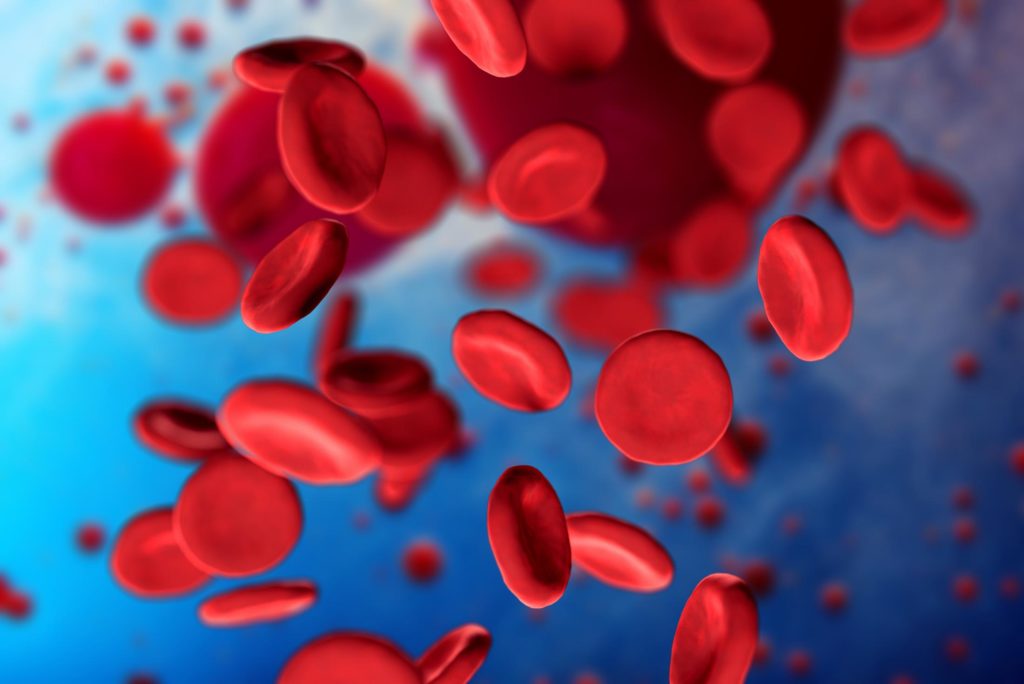
Blood clots are minuscule, but their ability for damage should not be underestimated. Blood clots are, in fact, a dangerous health condition capable of causing major health events such as heart attack, stroke, and even death. These tiny wrecking balls develop as a result of illness, disease or injury, but some develop seemingly out of nowhere or without a clear reason. Patients with peripheral artery disease, or PAD, have a greater chance of developing complications from blood clots and should understand their risks for developing this life-threatening condition. PAD patients should also become aware of the signs they may be experiencing a blood clot.
The ability to clot is very important to the health of an individual. Clotting is the body’s ability to repair itself after injury. Clotting occurs when the body’s blood platelets and plasma mix and coagulate, forming a clot over the site of injury. This clot helps to both heal the damaged tissue and prevents dirt and germs from causing infection. Medical professionals would likely agree that this situation is an excellent and an ideal example of how clotting is good. A less ideal and downright dangerous, situation for clotting is when blood platelets and plasma mix on the inside of a blood vessel, causing a blood clot.
Clots can form in either the veins or the arteries and can cause medical complications in either type of blood vessel. Because the veins carry blood to the lungs for reoxygenation, clots formed in the veins put the patient at risk of developing a dangerous condition called deep vein thrombosis. Patients with deep vein thrombosis, or DVT, develop a blood clot in one of the body’s major veins, usually in the lower half of the body in the area of the legs or pelves. These clots cause blood flow to back up into the extremity or area, causing painful swelling.
Blood clots can detach themselves from the wall of the blood vessel where they were formed. Once detached, the clots travel throughout the body and even pass through the heart. When the clot arrives at the lung, it typically becomes stuck. This reduces blood flow and oxygen. This situation is known as a pulmonary embolism. According to the American Society of Hematology, pulmonary embolisms, and deep vein thrombosis kill nearly 100,000 annually. The Centers for Disease Control estimate that one-third of this number died within one month of their diagnosis.
Patients with peripheral artery disease have a higher risk of developing blood clots because of their narrowed arteries. Peripheral artery disease is caused by atherosclerosis, or plaque buildup, in the arteries of the lower extremities like the legs and pelvis. Atherosclerosis occurs in patients as a result of genetics, diet or some health conditions, like diabetes.
“Because a PAD patient’s arteries are narrowed, should the patient develop a blood clot, the clot could block off the artery entirely, putting a halt to blood flow,” says Dr. Michael Budler, M.D. Butler is an interventional radiologist in Grand Island, Nebraska. He treats patients with peripheral artery disease in order to prevent heart attack or stroke. “When an artery becomes completely blocked as a result of plaque meeting a blood clot, it causes a major health event – which can be fatal.”
Budler believes PAD patients should educate themselves on the signs and symptoms of a blood clot to prevent a serious health episode. Signs of a blood clot in PAD patients include numbness, swelling and sharp pain, tenderness and warmth to the touch, and a bluish hue in the affected area. Many PAD patients with blood clots also experience very intense pain in their calf, especially when stretching their toes upward toward their body. Budler cautions patients with these symptoms and peripheral artery disease to seek treatment immediately for their symptoms.
